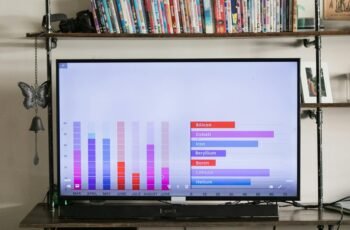You’re weighing LiFePO4’s higher upfront price against its long lifespan, and you’re right to question the math. While you’ll pay more per kWh than lead-acid, you’ll get thousands of deeper cycles, higher efficiency, and less maintenance. That can drive your cost per kWh delivered way down—if your use case fits. The key is matching cycle life, depth of discharge, and charge rates to your needs. Let’s test that assumption with real numbers and scenarios.
Upfront Price Benchmarks Across Battery Chemistries
Start with a clear baseline: LiFePO4 packs typically land at $250–$500 per kWh for reputable brands, while mainstream NMC/NCA lithium runs $300–$600 per kWh. When you’re doing a price comparison across battery types, anchor on usable capacity and include the full pack, not cells alone. Expect premium rack-mount LiFePO4 to cluster around $350–$450 per kWh, with budget imports dipping lower but adding risk. NMC/NCA often costs more per kWh at the pack level due to higher energy density packaging and BMS complexity. Lead-acid sits cheaper upfront—roughly $120–$200 per kWh—but it’s not apples-to-apples on energy delivered. Factor shipping, mounting, and certification; they can swing totals by 5–15%. For small systems, surcharges matter; for larger banks, pallet pricing narrows gaps.
Cycle Life and Depth of Discharge: What You Actually Get
You’ll see cycle life ratings, but what you actually get depends on how deep you discharge each time. Push to 100% depth-of-discharge and you gain usable energy today, yet you’ll shorten total cycles. Ease back to 80% or 50% DOD and you sacrifice some capacity now for a longer, cheaper-per-kWh lifespan.
Cycle Life Ratings
Fine print matters. When you see “3,000–6,000 cycles” on a LiFePO4 spec sheet, ask what test standard, temperature, and charge rate were used. Manufacturers often rate cycle life to 70–80% remaining capacity, not failure, so you’ll still have usable energy after the rating. Verify the test’s rest periods and whether the pack included a BMS—both affect cycle longevity.
Check the warranty’s cycle count and capacity-retention clause; it’s the enforceable version of the marketing claim. Compare continuous vs peak current limits, since higher C-rates shorten life even if the cycle number looks similar. Factor storage temperature ranges and calendar aging, because time degrades cells too. Build in maintenance considerations: keep firmware updated, balance cells periodically, log cycles, and monitor internal resistance to catch early degradation.
Depth-Of-Discharge Impact
Although the spec sheet cycle count grabs attention, depth of discharge (DoD) drives what you actually get over the battery’s life. The deeper you cycle a LiFePO4 pack, the faster it ages. Cycle life isn’t a fixed promise; it’s a function of how far you regularly drain the cells. At 80–100% DoD, you’ll see markedly fewer cycles than at 50% or 20% DoD. That’s the core of depth of discharge effects.
To plan realistically, match your routine DoD to battery longevity considerations. Moderate DoD reduces electrode stress, limits heat, and curbs side reactions, so capacity fades slower and internal resistance rises more gradually. If you want strong long-term performance, set conservative discharge limits, keep charge/temperature within spec, and standardize your cycling pattern.
Usable Energy Tradeoffs
While it’s tempting to maximize every watt-hour, usable energy isn’t free—it trades off against cycle life as depth of discharge increases. If you regularly pull 100% DoD, you’ll get more daily output but fewer total cycles. At 80% DoD, you usually hit a sweet spot: strong usable capacity with slower wear. Shallow cycling—say 50%—cuts daily output but often doubles or triples total cycles, reducing cost per delivered kWh.
You should size packs so average discharge stays moderate, reserving headroom for peaks. Prioritize energy density only if space and weight matter; otherwise, emphasize longevity tradeoffs and total lifetime energy. Calibrate your BMS limits, charge to 3.45–3.5 V/cell, avoid deep cold or heat, and balance cells. That way, you’ll actually get dependable, economical energy.
Efficiency, Charge Rates, and Real-World Performance
You’ll gauge real value by looking at round-trip efficiency—how much energy you actually get back after charging. You also need to weigh fast vs. standard charging, since quicker rates save time but can raise heat and stress. Finally, factor in temperature, because cold and heat shift performance, charge acceptance, and usable capacity.
Round-Trip Efficiency Metrics
Two metrics dominate real-world LiFePO4 performance: round-trip efficiency and charge rate. You care about how many watt-hours you get back for every watt-hour you put in. Typical round trip efficiency lands around 95–98% for quality packs, but system-level losses from inverters, wiring, temperatures, and BMS behavior can pull that down. Treat round trip efficiency as one of your primary performance metrics when modeling cost per delivered kWh over the battery’s life.
Measure efficiency across your actual duty cycle: state-of-charge window, average load, ambient temperature, and rest times. Log energy in/out at the DC side to isolate the battery, then at the AC side to capture total-system reality. Watch degradation trends; if efficiency drops as internal resistance rises, adjust cycling depth, thermal management, or replacement timelines.
Fast vs. Standard Charging
Even if you size your pack correctly, how quickly you charge it reshapes efficiency, heat, and lifespan. With LiFePO4, charge rates influence cost per cycle more than you’d expect. Fast charging benefits include shorter downtime and better asset utilization, but you’ll see higher I²R losses and tighter current control requirements. Standard charging drawbacks are longer wait times and underused capacity during peak demand, though you typically gain slightly better round‑trip efficiency and gentler wear.
- Use 0.5C–1C for routine charging; reserve >1C for when uptime matters.
- Match your charger’s profile to your BMS limits to avoid hidden efficiency losses.
- Track kWh-in vs. kWh-out at different rates to quantify real costs.
- Balance throughput vs. cycle life to minimize lifetime $/kWh delivered.
Temperature Impacts Performance
Charge rate choices set the stage, but temperature decides how those choices play out in the real world. You’ll see temperature effects immediately: cold slows ion movement, raising internal resistance, cutting usable capacity, and limiting charge acceptance. In heat, reactions speed up, so efficiency improves short term, but stress, swelling, and side reactions accelerate, trimming lifespan.
To protect cells, your BMS throttles charge rates at low or high extremes, so performance variability shows up as longer charge times or reduced output. For best results, charge near 20–30°C, pre-warm packs before fast charging in winter, and allow airflow in summer. Plan for derating below 0°C and above 40°C. Managing temperature keeps efficiency high, maintains safe charge rates, and preserves the cost-to-lifespan balance.
Total Cost of Ownership: Calculating Cost per Kwh Delivered
While sticker price grabs attention, you get real value by looking at total cost of ownership—specifically, what you pay per kWh actually delivered over the battery’s life. To run a tight ownership analysis, convert upfront and operating expenses into a cost-per-kWh metric. Use this formula: (purchase price + charger/BMS + installation + expected maintenance − salvage value) ÷ lifetime delivered kWh. Lifetime kWh equals usable capacity × depth of discharge × round-trip efficiency × cycle count.
- Include replacement parts, shipping, and taxes in total cost.
- Adjust usable capacity for depth of discharge limits and aging.
- Use verified cycle life at your typical discharge rate and temperature.
- Account for charging losses: multiply by round-trip efficiency.
Compare batteries on this common denominator, and you’ll identify the lowest-cost energy provider.
Use-Case Scenarios: Solar, RV, Marine, and Backup Power
Because cost per kWh varies with how you use a battery, match LiFePO4 packs to the realities of solar storage, RV living, marine systems, and backup power. In solar applications, you’ll cycle daily; prioritize higher cycle life, robust BMS, and modular capacity so you can expand as loads grow. For rv energy, weight and space matter; LiFePO4’s flat discharge curve keeps inverters happy, and fast charging lets you top off during short generator runs. In marine usage, vibration resistance and sealed cases reduce maintenance; pair with alternator-friendly charging and corrosion-resistant hardware. For backup solutions, you’ll see long idle periods and occasional deep discharges; low self-discharge, safe chemistry, and cold-weather charging protection preserve reliability while keeping lifetime cost predictable under intermittent use.
When Paying More Makes Sense—and When It Doesn’t
Even if the sticker price stings, paying more for LiFePO4 makes sense when higher cycle life, tighter quality control, and a proven BMS reduce your cost per delivered kWh over years of daily use. Use a quick battery longevity analysis to see if the premium lowers your lifetime energy cost and downtime risk. That’s your pricing justification. If your loads are mission-critical or your duty cycle is daily, the upgrade often pays for itself. But for light, occasional use, a mid-tier pack can be smarter.
- Daily cycling, deep discharges, and heat exposure favor premium cells with conservative ratings.
- UL/IEC certifications, robust BMS features, and strong warranties protect your investment.
- Reliable vendors with traceable cells beat unknown imports.
- Weekend use or infrequent backup rarely needs top-tier packs.
Conclusion
You’ve seen the upfront premium, the cycle-life math, and the real-world efficiency. You know LiFePO4 often wins on cost per kWh delivered—especially with deep cycling, fast charging, and minimal maintenance. So here’s the twist: the “expensive” option may quietly be the cheapest over time. Will you keep paying for replacements and inefficiencies, or lock in thousands of reliable cycles now? Your use case decides—solar, RV, marine, backup. Choose wisely… because the next discharge could tell the story.

